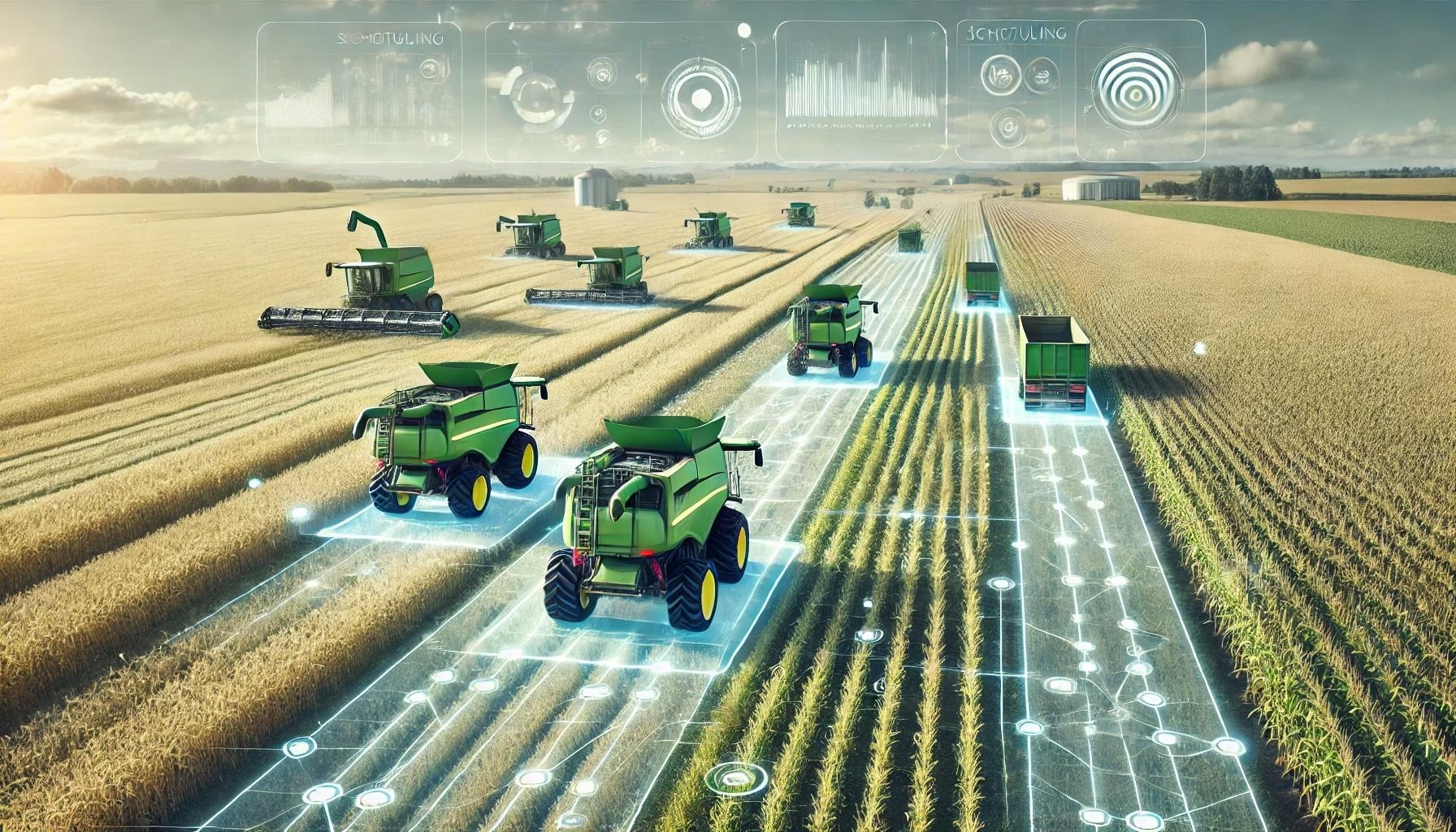This breakthrough in dynamic job allocation helps optimize the coordination of harvesters and transport vehicles, reducing costs and increasing efficiency even in unpredictable farm environments.
 Research: Dynamic job allocation method of multiple agricultural machinery cooperation based on improved ant colony algorithm
Research: Dynamic job allocation method of multiple agricultural machinery cooperation based on improved ant colony algorithm
In an article recently published in the journal Scientific Reports, researchers from Xinjiang University, China, introduced a novel approach for dynamic job allocation in multi-machine agricultural cooperation. This method addresses challenges arising from individual machine failures during collaborative operations. The paper proposed a more advanced solution, improving the ant colony algorithm through multi-level cooperation and a rule-ant colony fusion approach, which makes it more effective in optimizing scheduling and reducing operational costs. This algorithm focuses on the complexities of modern agriculture, particularly smart farming, where technology and machinery are integrated to enhance efficiency and productivity.
Technological Advancements in Smart Agriculture
Smart agriculture has transformed traditional farming, moving from small-scale, manual tasks to large-scale, systematic operations. This shift is driven by advanced machinery and equipment that increase precision and efficiency.
However, challenges remain in coordinating and managing multiple machines in complex environments. The rise of smart agriculture has created a need for advanced algorithms and models to ensure seamless collaboration and optimal performance of agricultural machinery. In particular, China's agricultural sector lags behind in mechanization compared to developed nations, creating a need for innovations like the proposed algorithm to bridge this gap.
Dynamic Job Allocation Method
In this paper, the authors introduced a dynamic job allocation method using an enhanced ant colony algorithm that integrates multi-level cooperation between different machines. The primary goal was to optimize the scheduling of harvesters and transport vehicles, minimizing both operational time and transportation costs.
This method follows a two-step process. First, the improved ant colony algorithm determines the optimal schedule for harvesters. This solution is then used to generate unloading point information, which is essential for scheduling transport vehicles.
In the event of machinery failure or variation in the operating environment, the method employs double-layer rescheduling for both harvesters and transport vehicles or single-layer rescheduling for transport vehicles alone. This approach maintains the current optimal schedule, reducing unproductive waiting times and minimizing the number of transport vehicles required. The method handles six dynamic scenarios, including harvester failure, an increase in harvesters, farmland adjustments, and transport vehicle failures.
Research Methodology
The researchers employed a comprehensive methodology to develop and validate their dynamic job allocation method. The study began by formulating collaborative scenarios for multi-machine operations and establishing a dynamic operation allocation model. This model consists of two levels: harvester scheduling and transport vehicle scheduling, using an improved ant colony algorithm to derive the optimal scheduling plan for both levels.
The method leverages an advanced data conversion algorithm to translate the harvester job allocation sequence into detailed transport vehicle scheduling information. This includes precise path segments and coordinates.
Key Findings and Insights
The outcomes demonstrate the effectiveness of the proposed dynamic job allocation method in optimizing the scheduling of both harvesters and transport vehicles. The improved ant colony algorithm successfully identified the optimal scheduling plan, even during machinery malfunctions or environmental changes.
The authors found that the method significantly reduced operational costs by minimizing unproductive waiting times for harvesters and optimizing the number of transport vehicles, enhancing overall efficiency in agricultural operations. Furthermore, the dynamic rescheduling mechanisms allowed the system to adapt promptly and efficiently to unforeseen changes, ensuring optimal performance despite disruptions.
The researchers also validated their model through simulations using data from Huaxing Farm in China, demonstrating the method’s real-world applicability.
Applications
The proposed dynamic job allocation method has significant implications for smart agriculture. By optimizing the scheduling of harvesters and transport vehicles, this method enhances the efficiency and productivity of large-scale agricultural operations. This approach is valuable for unmanned farms, where seamless integration of multiple machines is crucial for maintaining continuous and efficient operations.
Furthermore, the method's adaptability to dynamic changes ensures its relevance in various real-world scenarios, effectively addressing the challenges of coordinating multiple machines in complex farmland environments. By addressing six different dynamic scenarios, the method is particularly well-suited to environments where operational conditions are highly variable.
Conclusion
The paper summarized that the dynamic job allocation method based on the improved ant colony algorithm offers an effective solution for optimizing the scheduling of multiple agricultural machines. This method minimizes operational time and transportation costs while demonstrating adaptability to dynamic changes, highlighting its potential for practical applications in smart agriculture. The improvements in the algorithm, including multi-level cooperation and the rule-ant colony fusion, ensure that it can handle the complexities of modern agriculture more efficiently than previous models. The findings provide a solid foundation for addressing scheduling and management challenges in multi-machine collaborative operations, paving the way for more efficient and sustainable agricultural practices.
Future work could refine the algorithms to enhance their applicability in more complex and variable environments. Additionally, integrating machine learning techniques could provide predictive capabilities, enabling proactive adjustments to job allocations based on anticipated changes in operational conditions.